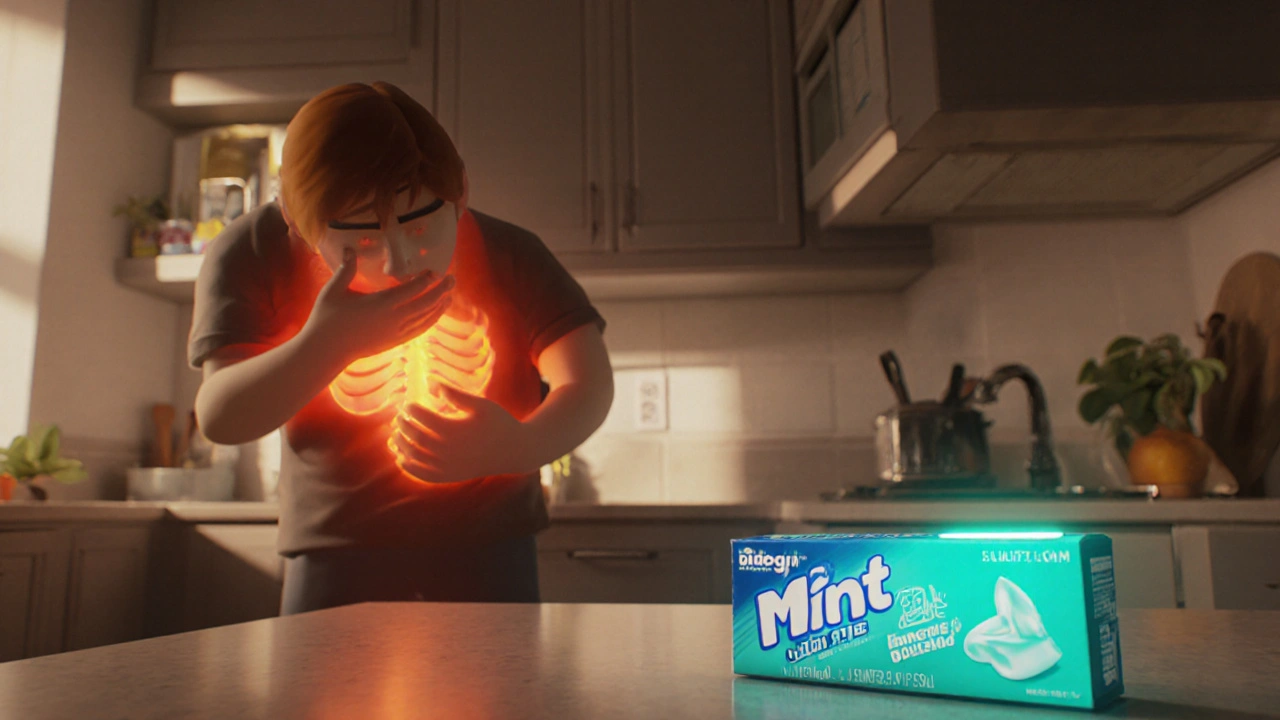GERD: Understanding Symptoms, Causes, and Treatment Options
When dealing with GERD, Gastroesophageal reflux disease, a chronic condition where stomach acid repeatedly backs up into the esophagus and causes irritation. Also known as gastroesophageal reflux disease, it often shows up as a burning sensation behind the breastbone. One common term you’ll hear is acid reflux, the backward flow of stomach contents into the esophagus, which is essentially the hallmark of GERD. Another frequent complaint is heartburn, a painful, fiery feeling that rises from the stomach toward the throat. Managing these symptoms often starts with proton pump inhibitor, a class of medication that reduces stomach acid production. This trio—GERD, acid reflux, and heartburn—forms the core of what most readers are looking to understand.
Why does GERD happen? The lower esophageal sphincter (LES) normally acts like a valve, opening to let food down and closing to keep acid out. When the LES weakens or relaxes inappropriately, acid slips into the esophagus, triggering irritation. Common contributors include obesity, which raises abdominal pressure; large, fatty meals that slow stomach emptying; and lifestyle habits like smoking or excessive alcohol use. Even certain medications—like antihistamines or calcium channel blockers—can relax the LES. Understanding that GERD is driven by both mechanical and chemical factors helps you see why addressing the root cause matters as much as treating the symptoms.
Typical GERD signs go beyond simple heartburn. Many people experience regurgitation, a sour or bitter taste at the back of the throat, especially after meals or when lying down. Chronic coughing, hoarseness, or a feeling of a lump in the throat (globus sensation) can also be clues. In more severe cases, prolonged acid exposure leads to esophagitis—actual inflammation of the esophageal lining—or even Barrett’s esophagus, a condition where the lining changes and raises the risk of cancer. Doctors diagnose GERD through a combination of patient history, response to an acid-suppression trial, and sometimes endoscopy to visualize any damage.
Treatment starts with lifestyle modifications, which are surprisingly effective for many. Elevating the head of the bed by 6–8 inches, avoiding meals within three hours of bedtime, and steering clear of trigger foods like citrus, tomato, chocolate, caffeine, and spicy dishes can cut reflux episodes dramatically. Weight loss of even 5–10% of body weight often lessens pressure on the LES. When lifestyle tweaks aren’t enough, medication steps in. Proton pump inhibitors, such as omeprazole or esomeprazole, block the final step of acid production and provide long‑lasting relief are first‑line therapy. H2‑blockers like ranitidine (now less common) or famotidine can be useful for milder cases. In refractory GERD, surgeons may consider a fundoplication—a procedure that reinforces the LES by wrapping part of the stomach around the esophagus.
Self‑management doesn’t stop at medication. Simple habits like chewing gum after meals can increase saliva production, which neutralizes acid. Wearing loose‑fitting clothing reduces abdominal compression, and staying upright after eating allows gravity to keep stomach contents down. If you notice nighttime symptoms, a small snack of low‑fat protein (e.g., a boiled egg) can help keep the LES closed. However, persistent symptoms, difficulty swallowing, unexplained weight loss, or vomiting should prompt a medical visit promptly—these could signal complications that need more intensive care.
Below, you’ll find a curated set of articles that dive deeper into specific aspects of GERD—from medication comparisons and dietary tips to when surgery might be the right choice. Whether you’re just starting to notice occasional heartburn or you’ve been managing chronic reflux for years, the collection offers practical insights and evidence‑based guidance to help you take control of your digestive health.

Chewing Gum Benefits for Heartburn Relief
- by Colin Edward Egan
- on 16 Oct 2025
Discover how chewing gum can ease heartburn, the science behind it, best gum choices, and practical tips for safe, effective relief.
